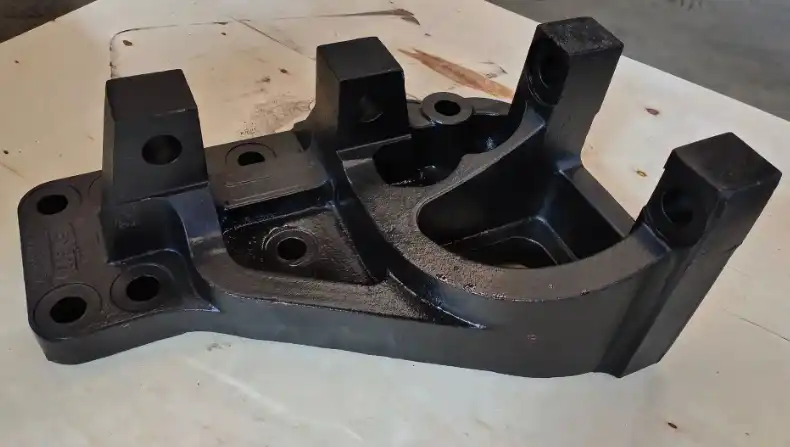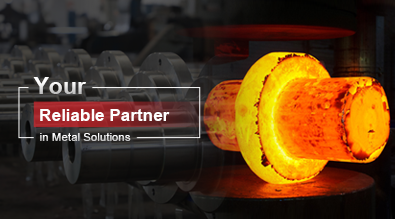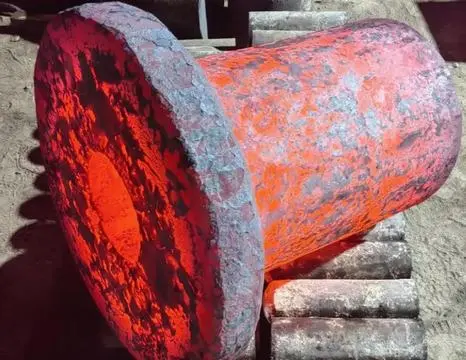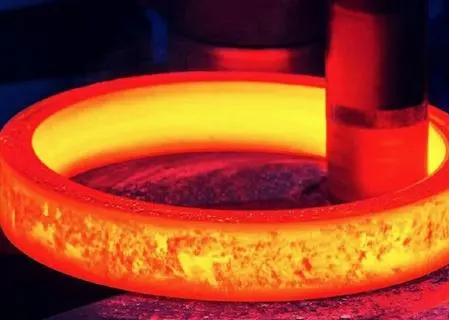When did Cast Ductile Iron Replace Cast Iron?
The transition from traditional cast iron to cast ductile iron marks a significant milestone in the history of metallurgy and manufacturing. This shift revolutionized various industries, offering improved material properties and performance. In this blog post, we'll explore the timeline of this transition, the key differences between cast iron and cast ductile iron, and the impact this change has had on modern engineering and industrial applications.

What are the key differences between cast iron and cast ductile iron?
Microstructure and Composition
Cast ductile iron, also known as nodular iron or spheroidal graphite iron, differs significantly from traditional cast iron in its microstructure and composition. While both materials contain carbon and silicon, the key distinction lies in the shape of the graphite particles. In cast iron, graphite appears as flakes, whereas in cast ductile iron, it forms spheroidal nodules. This structural difference is achieved through the addition of magnesium or cerium during the casting process, which promotes the formation of spherical graphite particles. The spheroidal shape of graphite in cast ductile iron contributes to its enhanced mechanical properties, including improved ductility, tensile strength, and impact resistance compared to traditional cast iron.
Mechanical Properties
The mechanical properties of cast ductile iron set it apart from traditional cast iron, making it a preferred choice for many engineering applications. Cast ductile iron exhibits significantly higher tensile strength, ranging from 414 to 1,380 MPa, compared to the 140 to 414 MPa range of cast iron. Additionally, cast ductile iron demonstrates superior ductility, with elongation values ranging from 2% to 25%, while cast iron typically has elongation values below 1%. This increased ductility allows cast ductile iron to withstand higher stress levels and deform plastically before fracturing, making it more resistant to cracking and sudden failure. The improved mechanical properties of cast ductile iron also contribute to its better machinability and weldability compared to traditional cast iron.
Applications and Versatility
The unique properties of cast ductile iron have expanded its range of applications beyond those of traditional cast iron. While cast iron has long been used in various industries, including automotive, construction, and machinery, cast ductile iron has found its way into more demanding applications. The material's combination of strength, ductility, and wear resistance makes it ideal for components such as crankshafts, gears, valves, and pump housings in the automotive and industrial sectors. In the construction industry, cast ductile iron is widely used for pipes, fittings, and structural components due to its superior corrosion resistance and ability to withstand high pressures. The versatility of cast ductile iron has also led to its adoption in the aerospace, energy, and mining industries, where it is used in critical components that require both strength and toughness.
How has the introduction of cast ductile iron impacted industrial manufacturing?
Improved Product Performance and Longevity
The introduction of cast ductile iron has significantly impacted industrial manufacturing by enabling the production of components with enhanced performance and longevity. The material's superior mechanical properties, including higher tensile strength and improved ductility, have allowed manufacturers to create parts that can withstand greater loads and stresses. This has led to the development of more efficient and durable machinery across various industries. For example, in the automotive sector, cast ductile iron engine components have contributed to increased engine efficiency and reduced wear, resulting in longer-lasting vehicles. In the construction industry, cast ductile iron pipes have demonstrated better resistance to ground movement and pressure fluctuations, leading to reduced maintenance requirements and extended service life for water and sewage systems.
Cost-Effective Manufacturing Processes
The adoption of cast ductile iron has also brought about cost-effective manufacturing processes in many industries. While the initial material cost of cast ductile iron may be higher than that of traditional cast iron, the overall production costs can be lower due to several factors. The improved machinability of cast ductile iron allows for faster and more precise machining operations, reducing production time and tooling costs. Additionally, the material's ability to be cast into complex shapes with thinner walls has led to weight reduction in many components, resulting in material savings and improved fuel efficiency in transportation applications. The longer service life of cast ductile iron parts also contributes to reduced maintenance and replacement costs over time, making it a more economical choice for many long-term applications.
Advancements in Design and Engineering
The unique properties of cast ductile iron have enabled advancements in design and engineering across various industries. Engineers can now create more innovative and efficient designs that take advantage of the material's strength, ductility, and versatility. For instance, in the wind energy sector, cast ductile iron has been used to manufacture large, complex components such as rotor hubs and main frames for wind turbines, contributing to the development of more powerful and reliable renewable energy systems. In the aerospace industry, cast ductile iron has found applications in landing gear components and engine mounts, where its combination of strength and impact resistance is crucial. These advancements in design and engineering have not only improved product performance but have also opened up new possibilities for solving complex engineering challenges in various fields.
When did the widespread adoption of cast ductile iron begin in various industries?
Early Development and Commercialization
The development of cast ductile iron can be traced back to the 1940s, with its official discovery credited to Keith Millis at the International Nickel Company in 1943. However, it wasn't until the early 1950s that the material began to gain traction in industrial applications. The first patent for ductile iron was granted in 1949, and commercial production started in the United States in 1950. During this early period, researchers and engineers worked to refine the production process and explore the potential applications of this new material. The automotive industry was among the first to recognize the benefits of cast ductile iron, with manufacturers beginning to use it in engine components and other critical parts. This early adoption helped demonstrate the material's advantages over traditional cast iron and paved the way for its wider acceptance in other industries.
Expansion into Infrastructure and Heavy Industry
Throughout the 1960s and 1970s, the use of cast ductile iron expanded significantly into infrastructure and heavy industry applications. The material's superior strength and corrosion resistance made it an ideal choice for water and sewage pipelines, replacing older cast iron and steel pipes in many municipal systems. This transition greatly improved the longevity and reliability of water distribution networks. In the heavy industry sector, cast ductile iron found applications in mining equipment, where its ability to withstand high impact loads and abrasive environments proved invaluable. The material also gained popularity in the production of large industrial machinery, such as presses and forming equipment, where its combination of strength and ductility allowed for the creation of more efficient and durable components. This period marked a significant shift in the widespread adoption of cast ductile iron across various industrial sectors.
Modern Applications and Continued Growth
In recent decades, the use of cast ductile iron has continued to grow and evolve, finding new applications in emerging industries. The material has played a crucial role in the development of renewable energy technologies, particularly in wind turbine components. Cast ductile iron is used extensively in the production of rotor hubs, main frames, and other critical parts of wind turbines, contributing to the rapid growth of wind energy production worldwide. In the automotive industry, the material remains a popular choice for engine blocks, crankshafts, and suspension components, especially in high-performance and heavy-duty vehicles. The oil and gas sector has also embraced cast ductile iron for its pressure-resistant properties, using it in valve bodies, pump casings, and other equipment exposed to harsh operating conditions. As industries continue to seek materials that offer a balance of strength, durability, and cost-effectiveness, cast ductile iron remains a versatile and widely adopted solution across various sectors.
Conclusion
The transition from cast iron to cast ductile iron has been a gradual process that began in the mid-20th century and continues to evolve today. This shift has dramatically impacted various industries, offering improved mechanical properties, cost-effective manufacturing processes, and new design possibilities. The widespread adoption of cast ductile iron has led to significant advancements in product performance, longevity, and efficiency across sectors such as automotive, construction, energy, and heavy industry. As technology continues to advance, cast ductile iron remains a crucial material in modern engineering and manufacturing, with ongoing research and development aimed at further improving its properties and expanding its applications.
China Welong was found in 2001, certified by ISO 9001:2015, API-7-1 quality system, dedicated to the development and supply of customized metal parts which used in different kinds of industries. Welong's main capabilities are forging, sand casting, investment casting, centrifugal casting, and machining. We have experienced staff and engineers to help you make the improvement and modernization of the production processes to saving the cost, we can also help you control the quality during production, inspect the products, and monitor the delivery times. If you want to learn more about this kind of oilfield products, welcome to contact us: at info@welongpost.com.
References
- Millis, K. D., Gagnebin, A. P., & Pilling, N. B. (1948). Production of Nodular Graphite Structures in Cast Iron. Journal of Metals, 185, 887-891.
- Walton, C. F., & Opar, T. J. (1981). Iron Castings Handbook. Iron Casting Society, Inc.
- Ductile Iron Society. (2013). Ductile Iron Data for Design Engineers. Retrieved from Ductile Iron Society website.
- Labrecque, C., & Gagne, M. (1998). Review of the Latest Developments in Ductile Iron Heat Treatment. Canadian Metallurgical Quarterly, 37(5), 343-358.
- Stefanescu, D. M. (2017). Cast Iron Science and Technology. ASM International.
- Hayrynen, K. L., & Keough, J. R. (2007). Austempered Ductile Iron - The State of the Industry in 2003. Keith Millis Symposium on Ductile Cast Iron.


China WELONG-Your Reliable Partner in Metal Solutions

